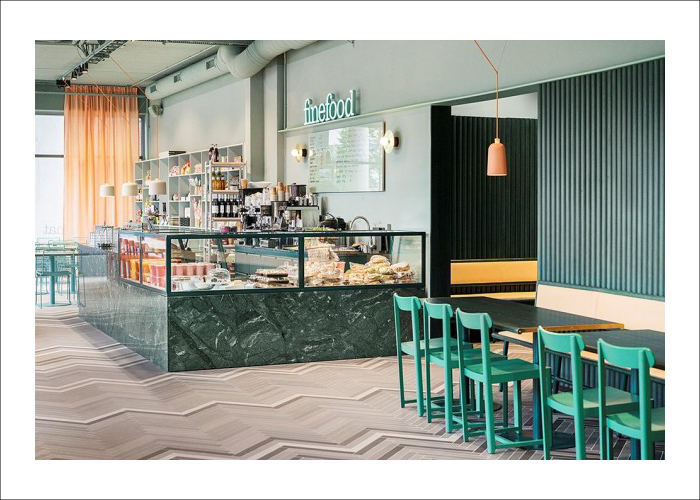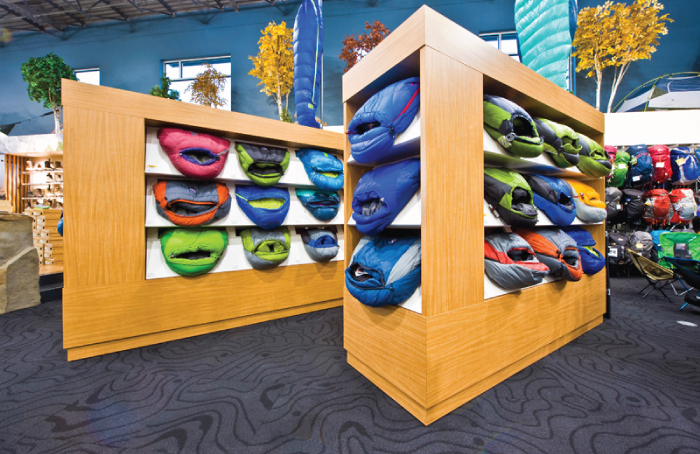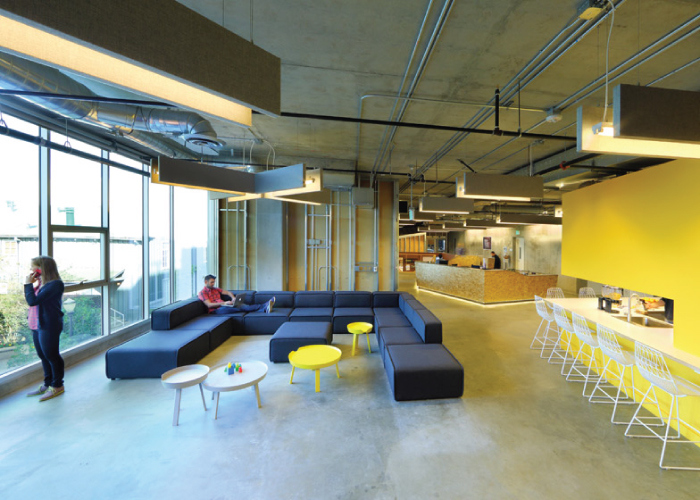
There are a tonne of intricate details in this design for Zizzi by Scardigno Design. Coordinating all these details to produce the restaurant you see above would have required great teamwork between the General Contractor and Interior Designer during construction.
Are you gearing up to tackle a commercial interior design project for your business? If this is your first experience working with a Registered Interior Designer it is beneficial for you to understand our design process and the amount of work it takes to ensure that the end result is something that all parties are happy with. Our previous two posts have guided you through the Pre-Project, Programming and Schematic Design phases, and the Design Development and Contract Document phases . What more can there be? Finding the right General Contractor and ensuring that your project is built as intended is the objective of the Tender and Project Administration phase.
Tender and Project Administration
Unless you’ve worked with a professional interior designer before, we find this is the phase of the project that is most difficult for potential clients to understand the extreme value of.
Tender
Once in a while our client has a General Contractor (GC) selected prior to hiring us. Other times, when schedule constraints do not allow the tendering route, we suggest that one be hired during the design process to jumpstart your project and keep things moving forward. However, the majority of the time we suggest that your project be put out to tender. Why? Competition is healthy and helps to keep your costs down by requiring anyone interested in building your space to be fair and reasonable when pricing your project.

We’re sure that Note Design Studio was involved to the very end of this project to help in supporting both the GC and their client, Finefood, to achieve a project everyone was proud of.
What does a tender mean for your interior designer? The process involves us issuing our contract documents (comprised of drawings and specifications) to interested GCs. The GCs will then compile pricing from a wide variety of subtrades to submit a complete project bid. We also issue a document entitled “Instructions to Bidders” which outlines the project description, contacts and general requirements that the GC will have to meet should they be awarded the project.
Additional tasks that we take on during the tender period include:
- Recommendation and pre-qualification of 3 General Contractors to participate in the project tender;
- Communication with bidders during tender; and
- Issue clarifications and addenda during tender.
This takes more time than you might think! GCs tend to be very detailed in the information they request so that they can be confident that the bid they are submitting has covered everything in the Contract Documents.
Project Administration
When your GC informs you that the really cool light fixtures your Interior Designer spent hours sourcing have been delayed and will compromise your opening date, do you feel confident enough to source a new option that will meet the aesthetic and functional requirements, all the while being suitable for a commercial application? When the millwork subcontractor submits shop drawings to illustrate their interpretation of the detailed custom retail fixture designed specifically to display your products, could you determine with certainty that what they understand matches the design, or provide comments and requested revisions required to do so? We don’t expect you to answer ‘yes’ to either of these not-so-hypothetical questions, that is part of our job! These are just two examples of the sometimes hundreds of responsibilities we take on in this phase of the interior design process.

The custom designed sleeping bag displays for our Grouse River retail project were highly detailed and specific to the product and goals of our client.

This is an example of just one page of the shop drawing set for the sleeping bag display. The submission was from the millworker and the red mark-ups are our comments for revisions required so that it could be built as intended. This project had 17 sets of shop drawings for the millwork alone; this does not include review of hardware, light fixtures, security gates, finishes and other items (the list goes on and on).
Other activities that keep us busy during this phase may include:
- Coordination of your contract with the selected GC;
- Communication with you and the GC over the course of construction;
- Weekly construction meetings to address any concerns and to monitor the progress in relation to the predefined schedule;
- Troubleshoot and provide solutions for issues that may come up due to existing site conditions, delayed materials, etc.;
- Review of shop drawings and submittals;
- Site visits to review any deficiencies and inspect completed work;
- Follow-up with documentation as needed to monitor changes and provide direction to the GC; and
- Review progress invoices submitted by the General Contractor and provide certificates for payment.
The Tender and Project Administration phase of your project will typically make up around 15% of our fixed fee price. We cannot stress enough how important the activities listed above are to the success of your project and are hopeful that, after learning what is involved, you will agree. Still need convincing? We would welcome you to speak to any of our previous clients for a better understanding of the value this phase added to their project.

The Funny or Die offices may look like a simple space, but it’s the details that create this illusion. Clive Wilkinson Architects would have made sure they were spot on when it came to Project Administration so that the project was realized as intended.
We hope that our series of posts on Hatch’s Interior Design Process has been helpful in preparing you on what to expect for your commercial project. We feel that it is important that our clients understand what is involved on our end and that we are always acting in their best interest. We enjoy what we do and we especially enjoy seeing you ecstatic with your interior when all is said and done.
» Are you ready to update your business interior? We can help. Contact Hatch Interior Design located in Kelowna, British Columbia – Because Good Design is Good Business™.
